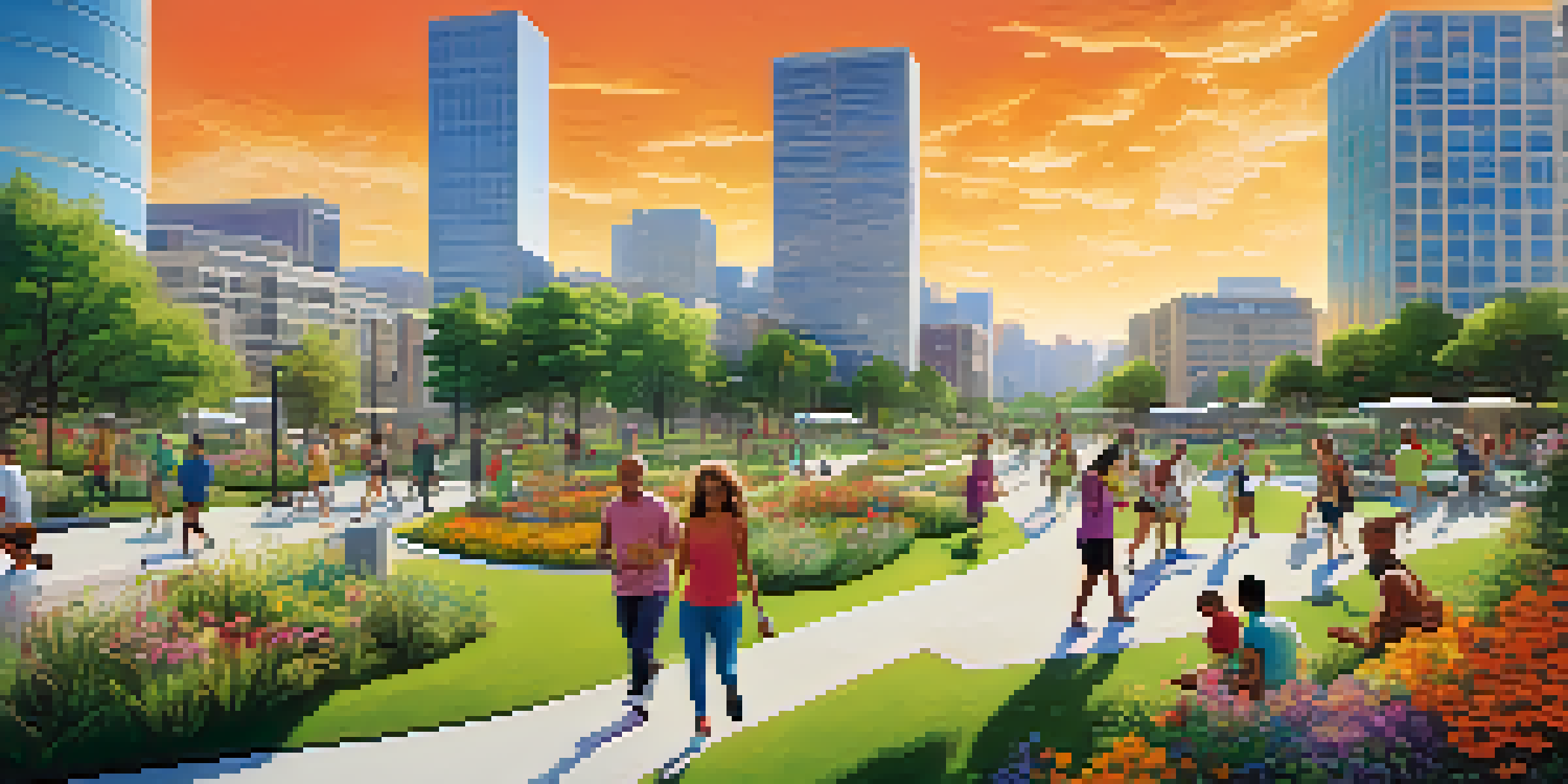The Future of Urban Design: Blending Technology and Nature

Understanding Urban Design in the Modern Context
Urban design is more than just the layout of buildings; it's about creating spaces that foster community and well-being. As cities continue to grow, the challenge lies in making these urban areas livable and sustainable. Modern urban design focuses on blending functionality with aesthetics, ensuring that every space serves a purpose while being visually appealing. With the rise of smart cities, technology plays a crucial role in shaping how we interact with our environments.
The Role of Technology in Urban Design
Technology is transforming urban design in profound ways, from smart traffic systems to innovative construction materials. For example, sensors can monitor air quality and traffic flow, enabling city planners to make data-driven decisions. Additionally, augmented reality can help visualize changes before they happen, allowing citizens to engage in the design process. This integration of technology not only enhances efficiency but also fosters a sense of community involvement.
Tech and Nature Enhance Urban Living
Blending technology with nature in urban design leads to more sustainable and community-focused spaces.
Nature's Essential Contribution to Urban Spaces
Incorporating nature into urban design is crucial for enhancing mental and physical health. Green spaces like parks and gardens provide a refuge from the hustle and bustle of city life, promoting relaxation and social interaction. Furthermore, biophilic design—an approach that seeks to connect people with nature—has been shown to improve productivity and well-being. By prioritizing nature, urban designers can create environments that nurture the human spirit.
Case Studies: Successful Blends of Tech and Nature
Cities around the world are leading the way in blending technology with nature. For instance, Singapore's Gardens by the Bay showcases how vertical gardens and smart irrigation systems can coexist beautifully. Similarly, the High Line in New York City exemplifies the transformation of urban infrastructure into green, accessible spaces. These examples illustrate that when technology and nature work together, they can enhance urban living significantly.
Sustainability is Key in Design
Modern urban design emphasizes sustainability through practices like green roofs and solar panels to reduce environmental impact.
Sustainable Practices in Urban Design
Sustainability is at the forefront of modern urban design, with a focus on minimizing environmental impact. Techniques such as green roofs, solar panels, and rainwater harvesting are becoming standard. By adopting these practices, cities can reduce their carbon footprint while creating healthier living conditions. Ultimately, sustainable urban design not only conserves resources but also builds resilience against climate change.
Community Engagement in Urban Design Processes
Engaging the community in urban design is essential for creating spaces that reflect local needs and desires. Public consultations and workshops allow residents to voice their opinions and collaborate on projects. This participatory approach not only fosters a sense of ownership but also leads to more successful outcomes. When communities are involved, the resulting designs are often more innovative and relevant.
Community Engagement is Essential
Involving the community in urban design processes ensures that spaces reflect local needs and fosters a sense of ownership.
The Future: Trends Shaping Urban Design
Looking ahead, several trends are poised to shape the future of urban design. The rise of remote work has changed how we think about living spaces, leading to more mixed-use developments. Additionally, the focus on resilience will drive innovations in infrastructure to withstand climate challenges. These trends highlight the importance of adaptability in urban design, ensuring that cities can thrive in an ever-changing world.
Conclusion: A Vision for Harmonious Urban Living
The future of urban design lies in harmonizing technology and nature to create vibrant, sustainable spaces. By embracing innovation while prioritizing green practices, cities can become more livable and resilient. As we move forward, it’s essential to keep the dialogue open between planners, technologists, and the community. Together, we can create urban environments that not only meet our needs but also foster a deeper connection to the world around us.